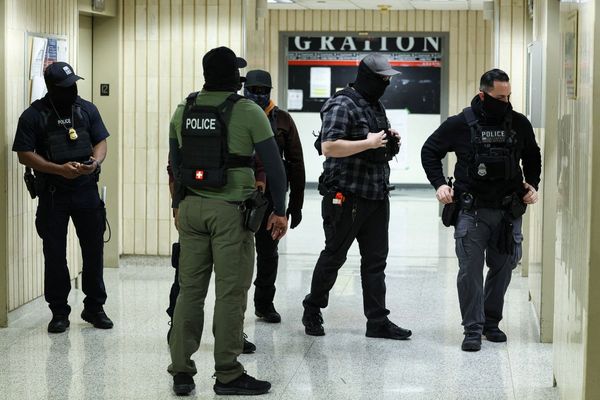
Did a Christmas miracle take place? Did the great British consumer defy recession, inflation and energy bills?
Well, there’s a grain of truth in the gloom-defying narrative, thus the liberal use by big-name retailers of phrases such as “confirm guidance” and “at the upper end of guidance” when forecasting their full-year profits. But, after a week of trading updates, the wider picture is nuanced. The story looks more like this: strong retailers remained strong; shopkeeping’s stragglers, or at least a few of them, fell further behind.
The FTSE 100 brigade can all be placed firmly in the winners’ camp. That’s JD Sports, Next, Sainsbury’s and Tesco: their Christmas numbers were variously solid to slightly better. Marks & Spencer, which hopes to recover sufficiently to rejoin the Footsie ranks (it might, eventually), also qualified with ease.
Then, though, there was the online-only fast-fashion pioneer Asos, which seems to require a pandemic and lockdown for the stars to align for it; its sales went backwards by 8% in the UK and its lowly share price only enjoyed a bounce because the City was braced for worse. Halfords issued a full-on profits warning because it couldn’t find enough car mechanics; Virgin Wines struggled to find customers.
Note, too, that we only get to hear at this stage from quoted companies with early-reporting obligations. While discounters Aldi and Lidl clearly sucked up a lot of sales (though the profits picture for them is far less clear), a big loser, if the industry data on market share paraded by rivals is correct, was Morrisons. The supermarket chain was taken off the stock market in 2020 via a £7bn private equity leveraged buyout that now looks spectacularly badly timed.
Within that mixed bag, one can make a few points. First, the happy non-food retailers seem to have matched or exceeded their own expectations in part because they had underestimated the degree to which sales had been hit the previous year by supply-chain snarl-ups during the pandemic. Both Next and JD Sports emphasised the contribution from greater stock availability. Yes, it helps to have products to sell. And, in supermarket-land, the worst fears about bird flu didn’t materialise. “Turkeys were available right up to Christmas Eve,” squawked the Tesco boss, Ken Murphy.
Second, never underestimate the close link between employment and retail spending. The cost of living crisis is clearly acute and intensifying across a wide span of the income spectrum. But a swathe of the population still has accumulated savings from Covid, a point the high street banks always make in explaining their surprisingly low levels of provisions for bad debts. If those in work feel safe in their jobs, there will still be a certain solidity to demand, even in “trading down” style. Régis Schultz, the chief executive of JD, said young shoppers had more cash in their pockets than a year ago thanks to the reopening of retail and hospitality, which has added casual jobs; Christmas 2021, by contrast, was dominated by Omicron.
Third, strikes had an uneven effect. While city-centre hospitality businesses have plainly been hit by rail strikes, shops weren’t generally. Retailers on edge-of-town parks may even have been helped by people taking to their cars. Royal Mail strikes and general lack of faith in delivery times was clearly a downer for internet-only retailers, but the likes of Sainsbury’s Argos benefited. In the industry jargon, it was an “omnichannel” Christmas – one for those with multiple ways to reach the customers.
Fourth, don’t confuse sales numbers with the volume of goods sold. Some of the headline revenue numbers sound terrific by the standard of recent years (7%-ish at Tesco at Sainsbury’s; 10% at M&S; 20% at JD) but prices, obviously, were higher with inflation. Both Tesco and Sainsbury’s said their actual volume of goods they sold was down slightly, even as they outperformed the market. Given the economic backdrop, lower consumption is probably not a surprise. Within that wrinkle, there is a further wrinkle: supermarket own-brands were strong, which tends to be useful for the retailers’ margins. It’s complicated.
Much the same can be said about the outlook for 2023. The “cautious” tone set by Next chief executive Simon Wolfson was replicated elsewhere. Simon Roberts at Sainsbury’s used the same word. Tesco’s Murphy thought he had detected “a little bit of cautious optimism” among consumers that the recession may be short; on the other hand he said “uncertainty is the new normal”.
Equivocation is probably only sensible. For many of the big retail names, Christmas was better than expected (very much so for JD) – but those expectations had been set low. Inflation and real incomes remain the big unknowns for 2023.







